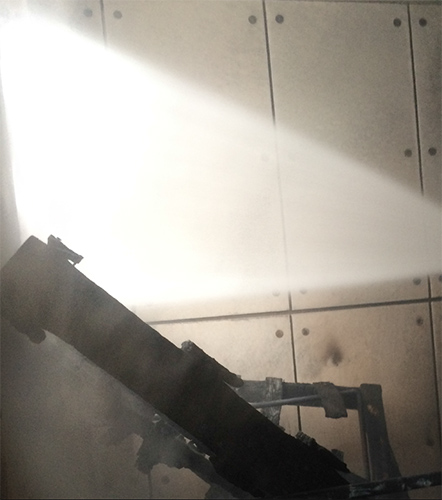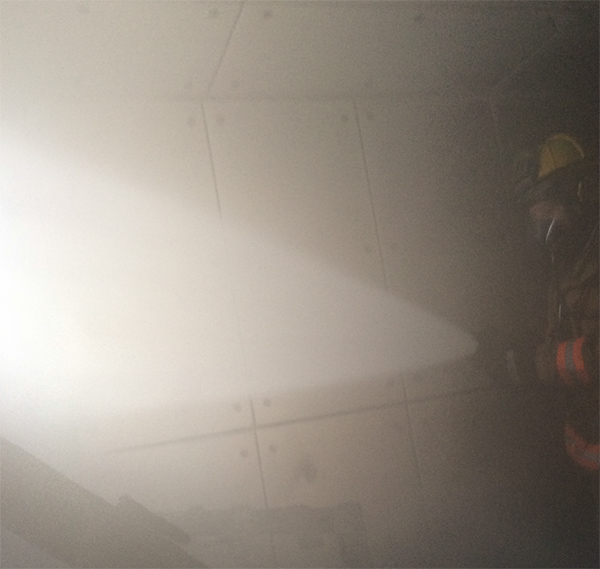
By Brian Zaitz
Have you been on duty at a fire in a compartmentalized space where the ventilation does not appear to be effective? The fire may be fire out, but the residual smoke is lingering, and you have taken windows and used fans to clear the air. However, because of the construction or architectural design, the airflow is not producing the ventilation needed.
Go back to your recruit school days. Now, consider hydraulic ventilation; this proven tactic is a quick and effective way to ventilate small, compartmentalized spaces and areas—such as basements—that traditionally offer challenges to our normal ventilation tactics. Hydraulic ventilation provides quick “off/on” ventilation at the movement of a nozzle bail, making it a great option for engine crews working the fire room.

Hydraulic ventilation works by using the entrained air in the nozzle pattern to move the by-products of combustion out through a ventilation opening. Typically, this is done with a fog pattern because of the large amount of air in this particular nozzle pattern.
RELATED: Berchtold on Hydraulic Ventilation ‖ Kiurski on Positive Pressure Ventilation ‖ The Dublin Fire Brigade on Compartment Firefighting
To accomplish hydraulic ventilation, first create a ventilation port. Normally, this is a window in the room of origin. Next, position your nozzle firefighter six to eight feet from the opening and have him open the nozzle with a fog pattern so as to create a cone through the vent port. Note that the pattern should not encompass the ventilation port but rather go through it so as to again entrain the air and smoke, pulling it out from the building.

As with any ventilation, it must be communicated, coordinated, and done correctly. Also, make sure that outside crews as well as command know you are hydraulically ventilating; this introduces large amounts of air into the fire room. Always watch for flare-ups and reigniting of smoldering materials. Simply diverting the nozzle firefighter’s hose stream from ventilation to the smoldering embers can easily mitigate these flare-ups.
Take the time to practice this proven tactic so that you can employ it if needed on your next fire.
Download this drill as a PDF HERE (5.9 MB)
Brian Zaitz is a 14-year student of the fire service, currently assigned as the captain/training officer with the Metro West (MO) Fire Protection District. Brian is an instructor with Engine House Training, LLC as well as instructor at the St. Louis County Fire Academy. Brian holds several degrees, including an associates in paramedic technology, a bachelors in fire science management, and a masters in human resource development. Brian is currently and accredited chief training officer and student of the National Fire Academy’s Executive Fire Officer Program.
MORE THROW BACK TO BASICS

